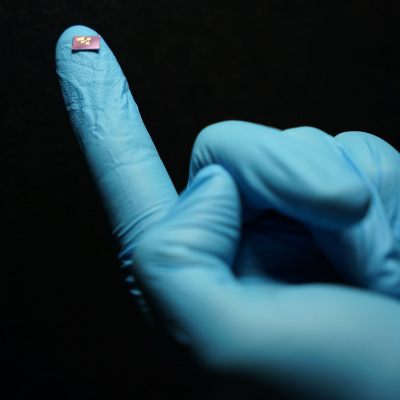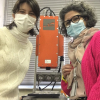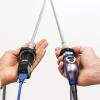
Scientists have developed a better tool to measure light, contributing to optical spectrometry in a way that could improve everything from smartphone cameras to environmental monitoring. The study was led by Finland’s Aalto University and resulted in a powerful, ultra-tiny spectrometer that fits on a microchip and is operated using artificial intelligence. The research involved a comparatively new class of super-thin materials known as two-dimensional semiconductors, and the upshot is a proof of concept for a spectrometer that could be readily incorporated into a variety of technologies—including quality inspection platforms, security sensors, biomedical analysers and space telescopes.
“We’ve demonstrated a way of building spectrometers that are far more miniature than what is typically used today”, said Ethan Minot, a professor of physics in the Oregon State University College of Science. The new device could fit on the end of a human hair, Minot said. The new research suggests components can be replaced with novel semiconductor materials and AI, allowing spectrometers to be dramatically scaled down in size from the current smallest ones.
“Our spectrometer does not require assembling separate optical and mechanical components or array designs to disperse and filter light”, said Hoon Hahn Yoon, who led the study with Aalto University colleague Zhipei Sun Yoon. “Moreover, it can achieve a high resolution comparable to benchtop systems but in a much smaller package.”
The device is 100 % electrically controllable regarding the wavelengths of light it absorbs, which gives it massive potential for scalability and widespread usability, the researchers say.
“Integrating it directly into portable devices such as smartphones and drones could advance our daily lives”, Yoon said. “Imagine that the next generation of our smartphone cameras could be hyperspectral cameras.” Those hyperspectral cameras could capture and analyse information not just from visible wavelengths but also allow for infrared imaging and analysis.
“It’s exciting that our spectrometer opens up possibilities for all sorts of new everyday gadgets, and instruments to do new science as well”, Minot said.
Minot thinks that as work with two-dimensional semiconductors progresses, “we’ll be rapidly discovering new ways to use their novel optical and electronic properties”. Research into 2D semiconductors has been going on in earnest for only a dozen years, starting with the study of graphene.
“It’s really exciting”, Minot said. “I believe we’ll continue to have interesting breakthroughs by studying two-dimensional semiconductors.”










